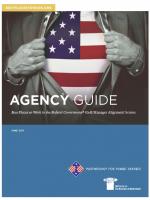
Best Places to Work in the Federal Government® Staff/Manager Alignment Scores

Managers play an important role in an organization; they implement policies from senior leadership and also carry concerns up the chain from staff to decision-makers. If managers and staff don’t see eye-to-eye on the key issues, then managers may be unable or unwilling to properly acknowledge and share staff concerns to leadership. Executives may be left unaware of what’s happening on the front lines, issuing policies that risk failure because they aren’t fully informed. Executives may also miss opportunities to improve the workplace, if they aren’t aware of challenges facing their staff.
As important as it is for staff and managers to be aligned, it’s not unusual to find that managers and staff report different levels of satisfaction. Managers tend to report higher levels of satisfaction, because they typically have more status, earn more money and exercise more autonomy in their daily roles. But if staff and manager opinions at a particular agency are more divergent than what is normal across government, it may signal trouble ahead for future mission goals and desired reforms.
The Staff/Manager Alignment Score helps decision-makers and action planners at a particular agency to determine whether staff and manager views wildly diverge compared to other agencies across government, or whether the workforce agrees on the agency’s strengths and challenges. A closer examination of the gaps between staff and manager views on each of the questions that comprise the score can help decision-makers and action planners to identify and address potential hot-button issues for the workforce.



